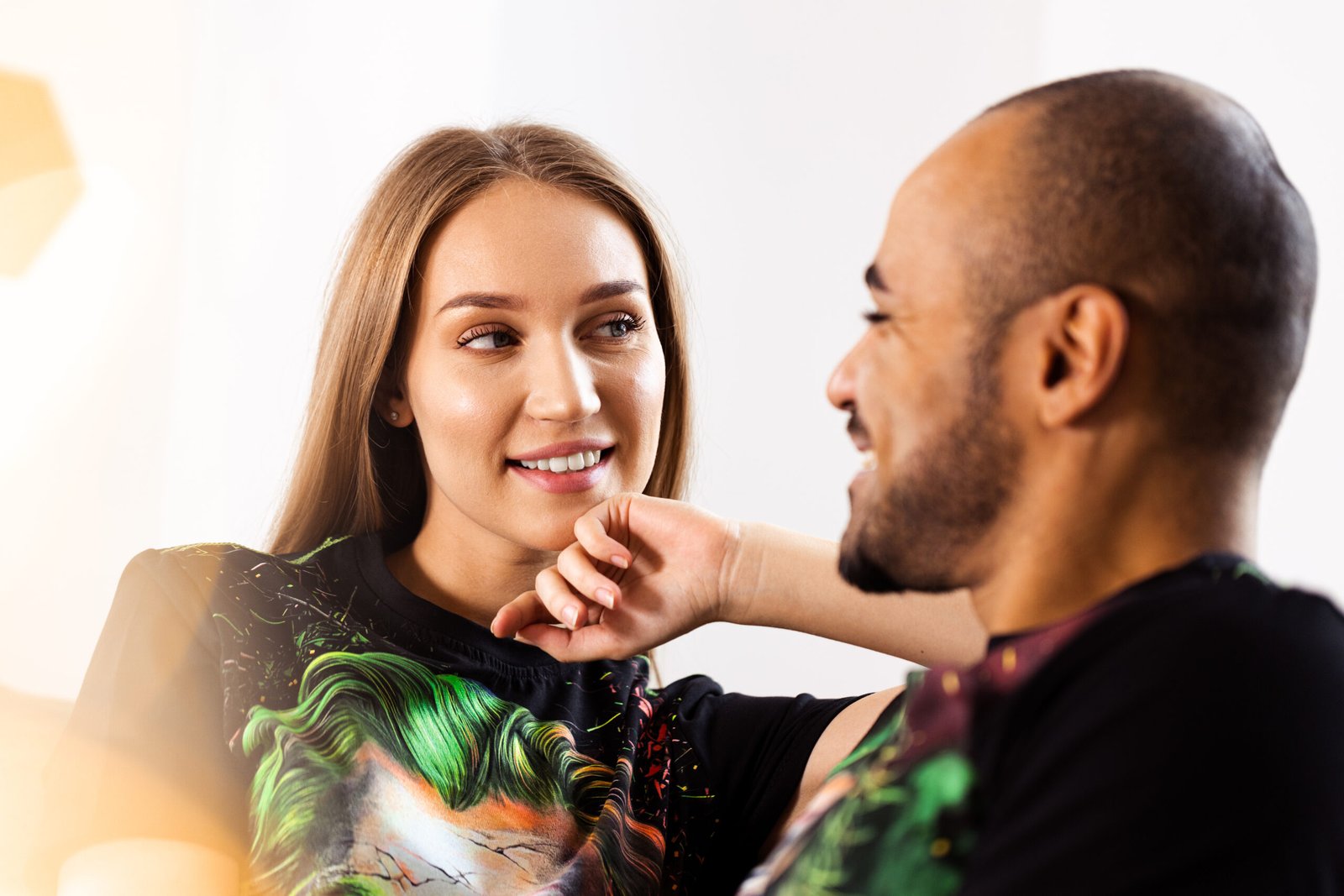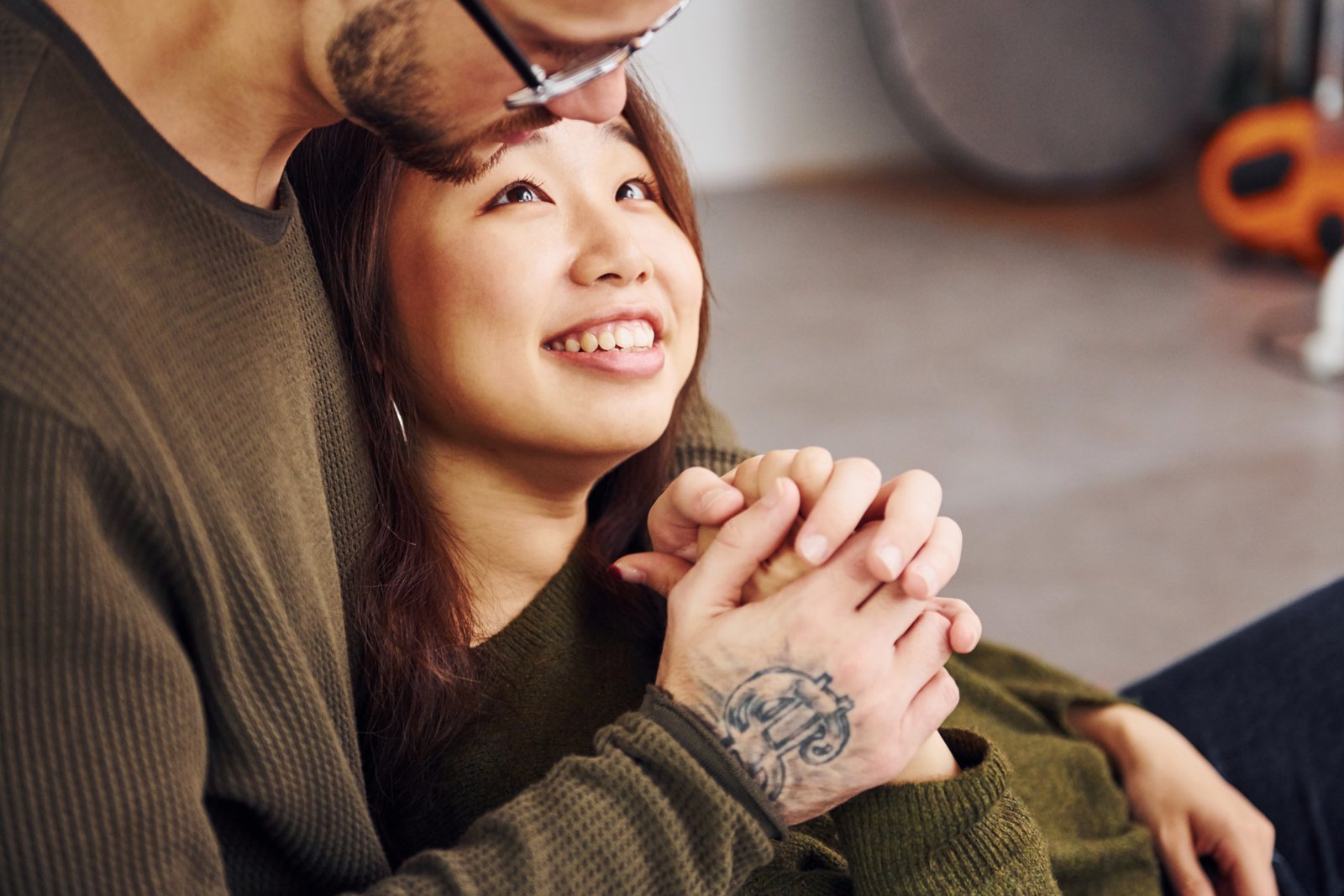Flirting is an intricate dance of social interaction, where confidence often plays a pivotal role. When engaging in flirtatious behavior, self-assurance can significantly influence the dynamics of the encounter. Confidence not only bolsters one’s presence but also enhances the overall attractiveness, making interactions more engaging and enjoyable for both parties involved.
From a psychological standpoint, feeling self-assured can have numerous benefits. It can reduce anxiety, improve mood, and foster a sense of control during social interactions. These psychological benefits extend beyond the realm of flirting, contributing positively to one’s overall mental health and well-being. When individuals approach flirting with confidence, they are more likely to project positivity and openness, which can, in turn, elicit a similar response from others.
Mastering flirting techniques is not merely about enhancing romantic prospects; it is also a crucial aspect of personal growth and social success. Developing these skills can lead to improved communication abilities, heightened self-awareness, and increased emotional intelligence. Confidence in flirting can act as a springboard for broader social competence, enabling individuals to navigate a variety of social situations with ease and grace.
By understanding the importance of confidence in flirting, one can begin to appreciate the broader implications of mastering these skills. It sets the stage for exploring practical techniques that can help individuals skyrocket their confidence, ultimately leading to more fulfilling and successful social interactions. This journey towards self-assurance is not only about romantic endeavors but also about cultivating a more confident and socially adept self.
1. Understand the Power of Body Language
Body language is a fundamental aspect of human interaction, often conveying more than words alone. In the context of flirting, mastering body language can significantly enhance your ability to communicate confidence and genuine interest. Non-verbal cues such as posture, eye contact, and gestures form the backbone of effective flirting.
Posture plays a crucial role in how you are perceived by others. Standing tall with your shoulders back and chest open signals confidence, making you appear more approachable and self-assured. Conversely, slouching or crossing your arms can create a barrier, indicating discomfort or disinterest. Maintaining an open posture invites others to engage with you, setting a positive tone for interaction.
Eye contact is another powerful tool in the art of flirting. Making and sustaining eye contact demonstrates attentiveness and interest, creating a connection that words alone cannot achieve. However, it is essential to strike a balance; too much eye contact can be perceived as intimidating, while too little can suggest a lack of confidence or interest. Aim for a natural, engaging gaze that shows genuine curiosity.
Gestures, such as a friendly wave or a subtle touch on the arm, can also convey interest and warmth. These small actions help to break the physical barrier and foster a sense of intimacy. However, it is important to be mindful of personal boundaries and cultural differences. Overly aggressive or inappropriate gestures can be off-putting and counterproductive.
Additionally, avoid common body language mistakes that can undermine your efforts. Fidgeting, avoiding eye contact, or standing too close can make you appear nervous or intrusive. Instead, focus on calm and confident movements that reflect your genuine interest and ease in the situation.
By understanding and utilizing the power of body language, you can enhance your flirting skills, making interactions more engaging and enjoyable for both parties. This non-verbal communication, when used effectively, can significantly boost your confidence and the overall success of your flirting endeavors.
2. Develop a Magnetic Smile
A smile is often the first thing people notice, and it plays a crucial role in flirting. The science behind a smile reveals its powerful impact on both the person smiling and the observer. When you smile, your brain releases endorphins, dopamine, and serotonin—chemicals that boost mood and reduce stress. This not only makes you feel good but also projects an aura of warmth and approachability.
For the observer, seeing a smile activates the orbitofrontal cortex, the part of the brain responsible for processing sensory rewards. This means that your smile can make others feel valued and happy, creating an immediate connection. A genuine, attractive smile can thus act as a magnet, drawing people towards you and enhancing your overall appeal.
Developing a magnetic smile involves more than just moving your lips. It’s about authenticity. A genuine smile, also known as a Duchenne smile, engages the muscles around your eyes, creating ‘crow’s feet.’ Such a smile is perceived as more sincere and trustworthy. To practice this, try thinking about something that genuinely makes you happy or recall a pleasant memory. This will naturally engage the appropriate facial muscles, resulting in a more authentic smile.
It’s also important to practice good oral hygiene to ensure your smile looks its best. Regular brushing, flossing, and dental check-ups can go a long way in maintaining a bright and attractive smile. Additionally, staying hydrated and avoiding foods and drinks that stain your teeth, like coffee and red wine, can help keep your smile looking vibrant.
Finally, consider the timing and context of your smile. Smiling at the right moment can enhance your charm and make your interactions more engaging. A well-timed smile, coupled with good eye contact, can send a powerful message of interest and friendliness, making your flirting efforts more effective.
Master the Art of Small Talk
Small talk serves as a crucial bridge in social interactions, paving the way for more profound and meaningful conversations. Mastering the art of small talk can significantly boost your confidence and enhance your ability to connect with others. It is essential to view small talk not as a superficial exchange but as a foundational step in building rapport.
Initiating a conversation can be the most daunting part. To ease into it, start with open-ended questions that invite more than a simple “yes” or “no.” For instance, instead of asking, “Do you like this place?” you might say, “What do you think of this place?” This approach encourages the other person to share their thoughts and feelings, providing you with more material to keep the conversation flowing.
Another effective strategy is to comment on your shared environment. Observations about your surroundings or the current situation can serve as natural conversation starters. Statements like, “This event has a great turnout, doesn’t it?” or “The music here is fantastic,” not only break the ice but also demonstrate that you are engaged and present in the moment.
Keeping the conversation engaging requires active listening and genuine curiosity. Show interest in the other person’s responses by asking follow-up questions and sharing related anecdotes from your own experiences. This reciprocity creates a balanced dialogue and strengthens the connection.
Transitioning from small talk to deeper conversations involves recognizing cues and signals from the other person. If they seem comfortable and responsive, gradually introduce more personal topics. Share a little about yourself and encourage them to do the same. For example, you can move from discussing the weather to talking about hobbies or interests, which opens up a wealth of potential subjects for deeper conversation.
Remember, the goal of small talk is to establish a foundation of trust and comfort. By mastering it, you enhance your ability to form meaningful connections, ultimately skyrocket your confidence in social settings.
Use Compliments Effectively
Compliments, when used effectively, can be a powerful tool in flirting and building rapport. The key to giving and receiving compliments is to ensure they feel natural and sincere. A genuine compliment not only boosts the other person’s confidence but also fosters a positive connection between both parties. To achieve this, it is essential to focus on the type of compliment, delivery, and the ensuing impact on the interaction.
When giving compliments, specificity is crucial. Instead of generic praises such as “You look nice,” aim for more detailed observations like “I love how your outfit complements your eyes.” This specificity shows that you are genuinely paying attention and appreciate unique qualities about the person. Additionally, compliments that highlight someone’s personality or skills can be more impactful than those focused solely on appearance. For instance, saying “You have a great sense of humor” or “Your insights during the meeting were very impressive” can create a deeper connection.
Delivery is equally important in making a compliment effective. Confidence plays a vital role; delivering a compliment with a warm smile and maintaining eye contact can significantly enhance its sincerity. Avoid over-the-top expressions or exaggerated tones, as they can come off as insincere or even sarcastic. A calm, composed manner is typically most effective and well-received.
Receiving compliments graciously is another aspect to consider. When someone compliments you, acknowledge it with a simple “Thank you” and perhaps a return compliment if appropriate. This reciprocity not only shows appreciation but also keeps the interaction balanced and positive. Avoid downplaying the compliment or deflecting it, as this can create an awkward atmosphere and diminish the positive impact.
Incorporating effective compliments into your interactions can significantly enhance the overall experience for both parties. When used appropriately, they can break the ice, build trust, and create a memorable and enjoyable encounter. Remember, the goal is to make the other person feel valued and appreciated, which in turn can skyrocket your confidence in the art of flirting.
5. Develop a Sense of Humor
Humor plays a pivotal role in flirting, serving as an indispensable tool to break the ice and build a connection. When executed correctly, humor can make interactions more enjoyable and memorable. To incorporate humor effectively into your interactions, consider starting with light-hearted comments or playful teasing. These can help create a relaxed atmosphere and signal your interest without coming on too strong.
The benefits of making someone laugh are manifold. Laughter releases endorphins, which can enhance mood and foster a sense of wellbeing. Additionally, shared laughter can create a bond, making the other person feel more comfortable and open to further conversation. A well-timed joke or witty remark can set you apart and make the interaction more engaging for both parties.
However, it’s crucial to gauge the appropriateness of your jokes in different contexts. What might be funny in a casual setting could be inappropriate in a more formal environment. Pay attention to the other person’s reactions and body language to determine if your humor is well-received. If they appear uncomfortable or do not respond positively, it may be best to steer the conversation in a different direction.
Developing a sense of humor is an ongoing process and can significantly enhance your confidence in social interactions. By practicing and observing what works, you can refine your comedic timing and delivery. Remember, the goal is not to force humor but to use it as a natural extension of your personality. When done right, humor can be a powerful asset in your flirting repertoire, helping you to connect with others on a deeper level.
Display Genuine Interest
One of the most effective ways to skyrocket your confidence while flirting is to display genuine interest in the person you are engaging with. Authenticity is key, and this begins with active listening. When you truly listen to what the other person is saying, you demonstrate that you value their thoughts and opinions. This not only makes the other person feel appreciated but also fosters a deeper connection, elevating the interaction from mere superficiality to meaningful engagement.
Asking thoughtful questions is another crucial aspect of showing genuine interest. Instead of sticking to generic inquiries, delve deeper with questions that reveal more about the person’s passions, aspirations, and experiences. For instance, rather than asking, “What do you do for work?” consider asking, “What inspired you to pursue your career?” This approach encourages more detailed and personal responses, providing insight into what truly drives the person.
Moreover, making the other person feel valued and understood is essential. Reflect on their responses and offer relevant comments or follow-up questions that show you are not only listening but also processing and appreciating their perspectives. For example, if they mention a recent trip they enjoyed, you might say, “That sounds incredible! What was your favorite part of the trip?” This indicates active engagement and genuine curiosity about their experiences.
Non-verbal cues also play a significant role in displaying genuine interest. Maintain eye contact, nod affirmatively, and smile genuinely to convey attentiveness and warmth. These subtle gestures reinforce the message that you are invested in the conversation and value the person you are flirting with.
By honing your listening skills, asking thoughtful questions, and making the other person feel valued and understood, you can significantly enhance your confidence and effectiveness in flirting. Remember, genuine interest creates a foundation for meaningful connections, making your interactions not only more enjoyable but also more impactful.
Build Confidence Through Self-Care
Confidence is intrinsically linked to self-care. Taking the time to groom yourself, dress well, maintain physical fitness, and nurture mental well-being are pivotal steps in enhancing your self-assurance. Grooming, for instance, is not merely about appearance but about the message you send to yourself and others. Regular grooming routines such as skincare, haircare, and even dental hygiene can significantly boost your sense of self-worth.
Similarly, dressing well can have a profound impact on your confidence levels. Wearing clothes that fit well and reflect your personal style can make you feel more comfortable and assertive. It’s not about following the latest fashion trends but about finding attire that makes you feel good about yourself. When you look in the mirror and like what you see, it naturally elevates your confidence.
Physical fitness plays an equally important role in building self-confidence. Regular exercise not only improves your physical health but also releases endorphins, the hormones responsible for feelings of happiness and reduced stress. Whether it’s a daily jog, yoga, or hitting the gym, staying active helps you feel more energetic and positive.
Mental well-being is another critical aspect of self-care that contributes to confidence. Practices such as mindfulness, meditation, and adequate rest can significantly enhance your mental health. Taking time to relax and decompress from the stresses of daily life helps maintain a balanced state of mind, which is essential for self-assuredness. Engaging in hobbies and activities that you enjoy also plays a significant role in mental wellness.
In essence, self-care is a multifaceted approach to building confidence. By paying attention to grooming, dressing well, maintaining physical fitness, and nurturing mental well-being, you create a strong foundation for a confident demeanor. These self-care practices not only improve your outward appearance but also fortify your inner sense of self, making you more poised and self-assured in all interactions.
8. Practice, Practice, Practice
Building confidence in flirting is akin to mastering any other skill—it necessitates consistent practice and perseverance. Engaging in low-stakes environments, such as casual social gatherings or light-hearted interactions with friends and acquaintances, provides an excellent starting point. These scenarios offer a safe space to experiment with different approaches and refine your techniques without the pressure of high expectations.
To begin, consider incorporating subtle flirting techniques into everyday conversations. Utilize open body language, maintain eye contact, and practice active listening. These fundamental behaviors can significantly enhance your social interactions and gradually build your confidence over time. Pay attention to the responses you receive and adjust your approach based on the feedback.
Learning from each experience is crucial. Reflect on your interactions to identify what worked and what didn’t. Did you notice any positive reactions to certain compliments or gestures? Were there moments where the conversation flowed effortlessly? Analyzing these aspects can help you better understand the dynamics of flirting and how to navigate them effectively.
Another beneficial method is to observe and learn from others. Pay attention to individuals who are naturally adept at flirting and note the techniques they employ. Whether it’s through subtle humor, playful teasing, or genuine compliments, observing successful flirts can provide valuable insights into what makes interactions engaging and enjoyable.
As your comfort level increases, gradually challenge yourself with more direct forms of flirting in varied settings. Remember, the key is to remain authentic and true to your personality. Over time, these practices will not only enhance your flirting skills but also boost your overall confidence in social situations.
In essence, practice is the cornerstone of becoming a confident flirt. By continually honing your skills in a variety of situations, you can develop a natural, self-assured presence that makes flirting a seamless and enjoyable part of your social repertoire.











